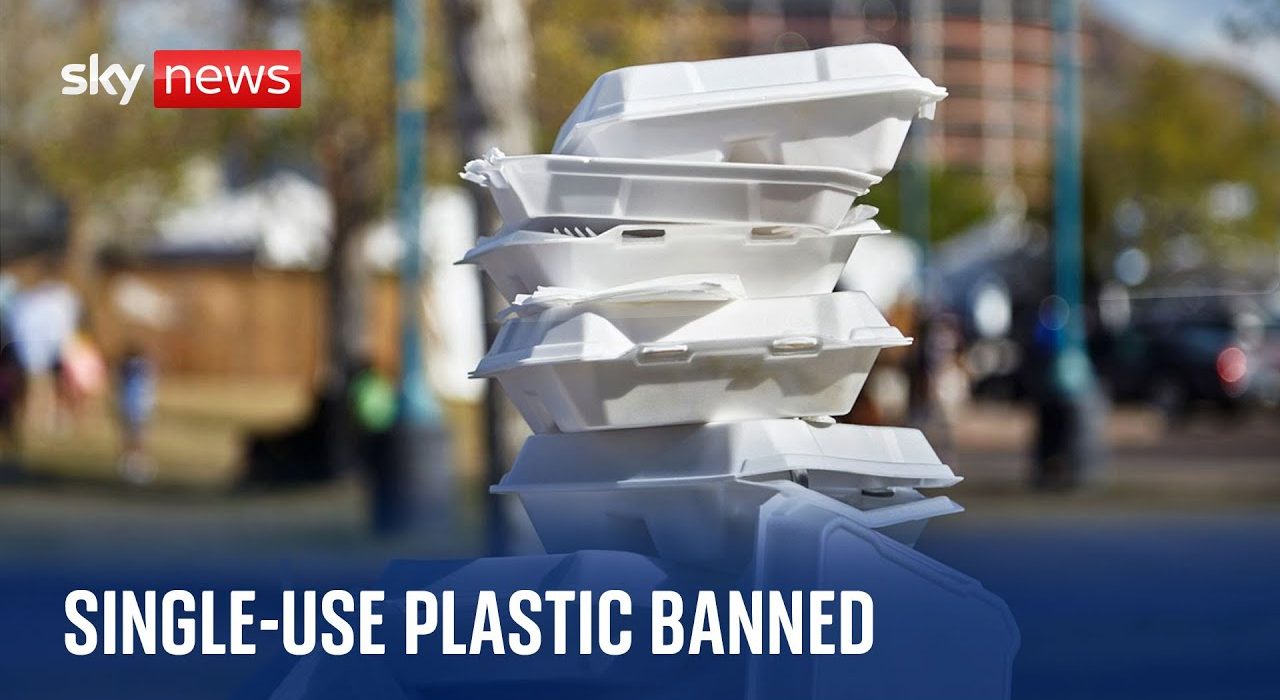In the vast ocean of environmental challenges, single-use plastics have emerged as a formidable adversary, permeating every aspect of our daily lives. The United Kingdom, recognizing the urgency of addressing this pervasive issue, embarked on regulatory measures in 2020 by banning specific single-use plastic products. Building upon this foundation, a more comprehensive ban took effect on October 1, 2023, extending its reach to include items such as plastic cutlery, balloon sticks, and polystyrene cups. This initiative signifies a determined stride toward curbing the relentless tide of plastic pollution, prompting an exploration into its multifaceted dimensions.
As we navigate these uncharted waters of plastic regulation, the ban’s implications unfold, bringing to light its potential impact and inherent challenges. Amidst the commendable intentions lie questions about its effectiveness, the clarity of objectives, and the availability of viable alternatives. This article sets sail into the heart of England’s plastic ban, scrutinizing its scope, evaluating its potential, and considering the broader implications for the nation’s environmental journey.
Scope of the Ban: What Changes Are Expected?
In the intricate dance of environmental regulation, the spotlight has turned to England’s latest endeavor—the ban on single-use plastics effective from October 1, 2023. The ban casts a wide net, encompassing an array of single-use plastic products, including plates, bowls, trays, cutlery, balloon sticks, and polystyrene cups. A nuanced provision permits the use of plastic plates, bowls, and trays only when accompanied by prepared food, signaling a potential shift in consumer habits.
Anticipated within this regulatory framework is the gradual disappearance of polystyrene containers frequently employed by takeaways? In their stead, the ban envisions the adoption of alternatives, potentially crafted from biodegradable materials. However, as the maritime journey into sustainable practices unfolds, concerns emerge about the environmental impact of these alternatives. The delicate balance between curbing plastic pollution and steering clear of potentially detrimental substitutes underscores the intricacies of the ban’s anticipated changes. Join us as we delve into the heart of these expectations, navigating the evolving landscape of single-use plastic regulations.
Limitations and Exclusions:
While England’s ban on single-use plastics marks a commendable stride towards environmental responsibility, it grapples with limitations that merit scrutiny. One notable gap lies in the exclusion of single-use plastic packaging from the regulatory ambit. As shoppers traverse supermarket aisles, the ban’s impact remains restrained, sparing a multitude of products like prepared fruits, vegetables, ready meals, salads, and snacks.
The significance of single-use plastic packaging in the plastic pollution narrative cannot be overstated. Its omission from the ban leaves a substantial void in the effort to mitigate the environmental impact of disposable plastics. Plastic packaging, often pervasive in everyday consumer goods, represents a considerable challenge to sustainable practices. Its endurance in the market exacerbates concerns about the ban’s holistic efficacy.
The lacuna raises questions about the comprehensiveness of the regulatory framework and its ability to address the intricate web of plastic usage across diverse consumer sectors. As environmental advocates commend the ban’s initiation, attention turns to future considerations for a more exhaustive and impact approach in the battle against plastic pollution.
The Critical Components of a Successful Ban
To evaluate the ban’s effectiveness, critical components must be scrutinized. The ban lacks specific, clear, and measurable objectives, along with a monitoring mechanism. Clear objectives are essential to ensure comprehension of the ban’s purpose and accountability in achieving its goals. Additionally, sustainable alternatives to single-use plastics need to be identified, yet the government offers no guidance on viable alternatives, leaving businesses to navigate this transition independently.
Challenges in Implementation: Businesses and Public Awareness
Businesses face the challenge of adapting to the ban, with a lack of guidance on alternatives and economic viability. The absence of viable alternatives may inadvertently displace the problem rather than addressing it. Engaging businesses from the outset and fostering awareness are crucial elements for a ban’s success. However, reports suggest that many businesses were unaware of the new regulations, highlighting potential gaps in communication and engagement strategies.
While England’s ban represents a positive step, bans are most effective when integrated into a broader framework addressing the entire plastic lifecycle. England’s ban does not restrict the production, import, or export of single-use plastics, allowing them to be manufactured and shipped abroad. Numerous exemptions and a limited range of covered items also raise questions about the ban’s ability to tackle wider plastic pollution issues comprehensively.
A Call for Comprehensive Action
While single-use plastic bans contribute to removing problematic plastics, a broader approach is imperative for substantial change. Reusable alternatives, effective communication, and comprehensive policies addressing every stage of the plastic lifecycle are vital. England’s ban, while a positive move, should be viewed as the initial step in addressing a fraction of the extensive plastic pollution problem. A more holistic strategy, including targeting significant contributors like single-use plastic packaging, is essential for sustained progress.
Conclusion
England’s ban on single-use plastics signifies a crucial step in addressing environmental concerns. However, its limitations, especially the exclusion of single-use plastic packaging, underscore the need for a more comprehensive approach. As the nation strives for a sustainable future, future policies should extend their scope to encompass all facets of plastic usage. To truly combat plastic pollution, regulatory frameworks must navigate the complexities of consumer goods, emphasizing sustainable alternatives. England’s initiative is a commendable beginning, yet a holistic strategy is imperative to forge a path toward a genuinely plastic-conscious society.

